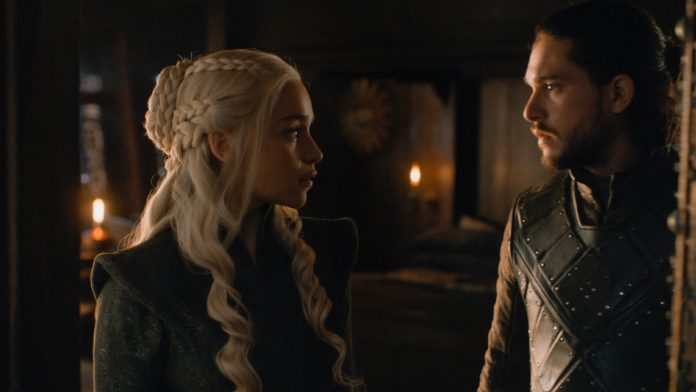When Game of Thrones first came on the scene, it was criticized for its excessive use of female nudity, with critics Myles McNutt even coining the term “sexposition” to describe the show’s habit of filling the background with naked bodies to distract the audience when a character needed to exposit about something. (The gold standard of this remains the scene in season 1 where Littlefinger talks about his past while a pair of prostitutes writhes around practicing sex acts on each other.)
Has that changed over the years? According to Sara David of Broadly, yes. David did an exhaustive study of women’s representation in Game of Thrones, and came to some very interesting conclusions. But first: the nakedness. Here’s how much the show included season by season:
- Season 1: 33 naked people (88% women, 12% men)
- Season 2: 16 naked people (100% women, 0% men)
- Season 3: 19 naked people (79%, 21% men)
- Season 4: 23 naked people (91% women, 9% men)
- Season 5: 28 naked people (68% women, 32% men)
- Season 6: 22 naked people (91% women, 9% men)
- Season 7: Six naked people (50%, 50% men)
So in season 7, the level of nudity on the show suddenly became much more egalitarian. David surmises that this is because, with the pace of the story speeding up, there’s less time for leisurely expository scenes set in brothels. in season 7, we only couples naked: Grey Worm and Missandei; Cersei and Jaime; and Jon Snow and Daenerys.
David’s study goes well beyond that — she also tabulates the number of rapes and attempted rapes in the show, the number of female characters killed onscreen, and the number of episodes that pass the Bechdel Test, which asks whether a given work of fiction features a scene where two women talk about something other than a man. It’s used as a litmus test to determine if female characters have an active role. According to David, only 18 of the show’s 67 episodes pass the test.
I don’t agree with many of David’s conclusions. For example, on the subject of the Bechdel Test David admits that it’s “pretty limited and somewhat arbitrary.” It can lead to misleading results. For instance, under the rules, “Stormborn” passes the test because it features that silly scene where the Sand Snakes, hanging out in hammocks, talk about who they’re going to kill. Most viewers would probably agree that the Sand Snakes aren’t sterling examples of well-written female characters who drive the narrative. On the other hand, an episode like “The Broken Man” doesn’t pass the test, even though it features great scenes between Olenna and Margaery on the one hand and Olenna and Cersei on the other.
I’d argue that the scene above is mostly about Olenna’s contempt for Cersei and Cersei’s last-ditch effort to salvage her position, but because the likes of Tommen, the High Sparrow and Loras come up, the conversation doesn’t pass the test.
For more, head over to Broadly for the whole article. Even if I don’t agree with all the conclusions, it’s an interesting read.
To stay up to date on everything Game of Thrones, follow our all-encompassing Facebook page and sign up for our exclusive newsletter.
Watch Game of Thrones for FREE with a no-risk, 7-day free trial of Amazon Channels.
h/t The Telegraph



















![[Book Review] The Blade Itself (The First Law Trilogy) by Joe Abercrombie](https://bendthekneegot.com/wp-content/uploads/2018/01/1516047103_maxresdefault-218x150.jpg)


















